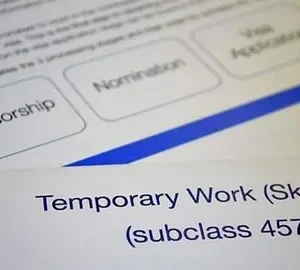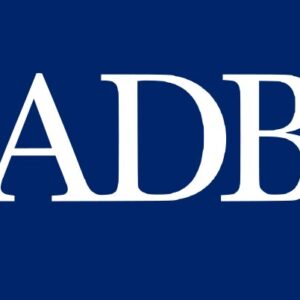
Nursing abroad isn’t just a career move — it can be a life change. Many countries actively recruit nurses because of chronic shortages, and a number of these pathways include immediate work permissions and accelerated routes to permanent residency. If you’re a nurse reading this, you want three things: clarity, speed, and a realistic roadmap. This guide distills the top 10 nursing opportunities across Canada, the United Kingdom, and New Zealand — three destinations that routinely offer both work visas and priority pathways to permanent residence for qualified nurses.
Important: visa rules change. I could not run a live check during writing, so please confirm the latest details on official government sites (I’ve embedded two primary links below). For UK and country-specific pages, check your local embassy or the official government websites.
Embedded quick links (verify latest info):
-
Canada immigration & work pathways: Immigration, Refugees and Citizenship Canada — Canada immigration
-
New Zealand immigration & skilled migrant pathways: Immigration New Zealand — Immigration New Zealand
Why nurses are in high demand (and why that matters for visas)
-
Aging populations in high-income countries mean more long-term care needs.
-
Pandemic aftershocks created long hiring waves and fast-track policy responses in many countries.
-
Nursing is a “skill shortage” in several immigration systems, which makes nurses eligible for priority processing, regional incentives, or points boosts for PR (permanent residency).
Because governments need nurses, many offer streamlined recruitment: direct employer-sponsored work visas, provisional registrations allowing immediate practice while credential checks finish, and clearer routes to residency for those who commit to working in under-served areas.
How to use this post
-
Read the 10 job types to understand where your specialty fits.
-
Use the comparison table to quickly see salary ranges, visa style, and residency prospects.
-
Follow the practical checklist at the end to get started on applications and licensure.
Top 10 nursing jobs abroad that often lead to instant work visas and fast-track PR
These job types are listed with their typical advantages and practical tips for applying from abroad. Many employers will sponsor work visas, and some roles are prioritized in national immigration lists.
1. Registered Nurse — Acute Care / General Medicine (Hospital)
-
Why it’s high priority: Hospitals need general RNs across wards, ERs and med-surg units.
-
Visa advantage: Large hospital systems often sponsor employer-tied work visas rapidly; conditional registration may permit work while foreign credentials are assessed.
-
PR prospects: High — most immigration systems award points or priority to registered nurses with hospital experience.
-
Tips: Emphasize recent acute care experience, BLS/ACLS certifications, and readiness to work nights/shifts.
2. Emergency Department (ED) Nurse
-
Why it’s high priority: EDs operate 24/7; shortages affect service delivery and patient safety.
-
Visa advantage: ED roles are often on critical occupation lists or the clinical shortage lists that enable skilled visas.
-
PR prospects: Strong, especially if you have trauma or advanced life support skills.
-
Tips: Document triage experience, trauma certifications, and any extended scope training.
3. Critical Care / ICU Nurse
-
Why it’s high priority: ICU nurses require high skill; countries will pay a premium and fast-track licensing for them.
-
Visa advantage: ICU roles can trigger faster credential evaluation and targeted recruitment programs.
-
PR prospects: Excellent — ICU experience is often a top point-earner in skilled migrant frameworks.
-
Tips: Show ventilator, dialysis, and hemodynamic monitoring competencies clearly on applications.
4. Mental Health / Psychiatric Nurse
-
Why it’s high priority: Mental health workforce shortfalls are acute in many jurisdictions.
-
Visa advantage: Some regions offer incentives and priority for mental health nurses especially for community or youth services.
-
PR prospects: Good, and sometimes enhanced for nurses who accept placements in under-served regions.
-
Tips: Include community outreach, CBT training, or substance-use program experience.
5. Aged Care / Long-Term Care Nurse
-
Why it’s high priority: Aging populations create sustained demand; many countries run targeted aged-care recruitment.
-
Visa advantage: Aged-care often features in regional migration lists and employer-sponsored pathways; some countries provide provisional work rights while registration is finalised.
-
PR prospects: Very good — some countries offer accelerated permanent residence for nurses who commit to long-term care sectors.
-
Tips: Highlight experience with geriatric syndromes, wound care, and dementia training.
6. Community Nurse / District Nurse (Home Care)
-
Why it’s high priority: Shifts toward community health and at-home care mean ongoing demand.
-
Visa advantage: Community nursing posts are often funded by local trusts/health boards that sponsor visas.
-
PR prospects: Decent — community roles may add value in regional or rural PR schemes.
-
Tips: Showcase home-visiting experience, chronic disease management, and cultural competency.
7. Midwife / Maternal-Child Health Nurse
-
Why it’s high priority: Maternal-child health remains a core health system priority; some regions lack sufficient midwives.
-
Visa advantage: Many regulatory bodies and governments recruit midwives aggressively, offering direct recruitment and sponsor pathways.
-
PR prospects: Strong for certified midwives, especially where regulated midwifery is scarce.
-
Tips: Clarify licensing credentials, preceptorships, and ability to work in community or hospital settings.
8. Nurse Practitioner / Advanced Practice Nurse
-
Why it’s high priority: APNs extend primary care capacity and reduce strain on physicians.
-
Visa advantage: Advanced practice roles may be scarce and can command immediate employer-sponsored visas.
-
PR prospects: Excellent where APNs are recognized and regulated (points and employer sponsorship are common).
-
Tips: Present scope of practice documents, prescribing authority (if applicable), and clinical leadership experience.
9. Perioperative (OR) / Theatre Nurse
-
Why it’s high priority: OR teams are essential and often understaffed; theatre nurses are highly valued.
-
Visa advantage: Hospitals will sponsor theatre nurses for work visas because the skills are less easily replaced locally.
-
PR prospects: Good, particularly for permanent hires within surgical centers or regional hospitals.
-
Tips: Highlight instrument handling, sterile technique, and scrub/ circulating experience.
10. Pediatric Nurse / Neonatal Nurse
-
Why it’s high priority: Pediatric specialties are consistently needed and are often on skilled occupation lists.
-
Visa advantage: Neonatal and pediatric nurses attract recruitment drives and employer sponsorships.
-
PR prospects: Very good, especially for neonatal ICU nurses.
-
Tips: Include neonatal resuscitation and infant feeding expertise.
Instant Work Visas for Nurses — How they typically work
-
Employer sponsorship: Most “instant” work visas are employer-sponsored. Employer posts the job, you apply, and the employer applies for a certificate of sponsorship (or equivalent). The visa follows.
-
Provisional/conditional licensure: Some countries allow provisional registration so you can begin working under supervision while the regulatory board finalises credential recognition.
-
Regional programs: Many regions (especially rural or remote areas) have accelerated sponsorship programs with clearer PR pathways.
-
What “instant” actually means: Not literal instant — it means faster priority processing relative to other occupations, with some employers and government programs able to get you into a job within weeks to a few months if documents are in order.
Fast-Track Permanent Residency in Canada, the UK and New Zealand
-
Canada: Federal and provincial programs exist (express entry, provincial nominee programs). Nurses often qualify under health worker streams; working in high-need regions and holding a job offer increases points and eligibility. Confirm current details on the Canada immigration site.
-
United Kingdom: The Skilled Worker visa (replaced/updated older Tier 2 route) covers nursing jobs if sponsored by an approved employer (NHS trusts commonly sponsor). NHS shortage occupation lists and salary thresholds are central to visa and PR calculations.
-
New Zealand: Skilled Migrant Category and employer-assisted visas are common for nurses; nurses are frequently on the Long-Term Skill Shortage List. For the most current requirements check Immigration New Zealand — Immigration New Zealand.
Comparison table: Top nursing jobs, visa type and PR prospects
| Job type | Typical employers | Visa style (common) | PR prospects | Typical salary range (country dependent) |
|---|---|---|---|---|
| Registered Nurse (Acute) | Large hospitals, health boards | Employer-sponsored skilled visa | High | CAD 60K–95K / GBP 26k–40k / NZD 55K–85K |
| ED Nurse | Emergency departments | Employer sponsorship / priority lists | High | CAD 65K–100K / GBP 28k–45k / NZD 60K–95K |
| ICU Nurse | Tertiary hospitals | Employer sponsorship | Very high | CAD 70K–110K / GBP 30k–50k / NZD 65K–100K |
| Mental Health Nurse | Community trusts, hospitals | Employer sponsorship | Good | CAD 60K–95K / GBP 26k–40k / NZD 55K–85K |
| Aged Care Nurse | Care homes, agencies | Employer sponsorship / regional | Very good | CAD 55K–85K / GBP 22k–33k / NZD 50K–75K |
| Community Nurse | Home care providers | Employer sponsorship | Good | CAD 58K–92K / GBP 24k–36k / NZD 52K–80K |
| Midwife | Maternity units, community | Employer sponsorship | High | CAD 65K–105K / GBP 28k–46k / NZD 60K–95K |
| Nurse Practitioner | Clinics, primary care | Employer sponsorship / skilled visa | Very high | CAD 85K–120K / GBP 40k–70k / NZD 80K–120K |
| OR Nurse | Surgical centers | Employer sponsorship | Good | CAD 65K–100K / GBP 28k–45k / NZD 60K–95K |
| Pediatric / Neonatal | Children’s hospitals, NICU | Employer sponsorship | Very high | CAD 65K–105K / GBP 28k–50k / NZD 60K–100K |
Salaries are indicative ranges and will vary by experience, region, and hospital. Always verify current pay scales with the hiring employer or national pay agreements.
Practical step-by-step checklist to get employed and fast-track PR
-
Document and verify qualifications
-
Obtain certified copies of your nursing diploma/degree, transcripts, and any postgraduate certificates.
-
Translate non-English documents using certified translators.
-
-
Get professional references
-
Two to three recent clinical references on official letterhead specifying role, duties and employment dates.
-
-
Check the destination country’s nursing regulator
-
Each country has a regulator (e.g., Colleges or Nursing Councils). Find the registration pathway for internationally educated nurses.
-
Expect credential evaluation, language testing, and possibly a competency exam.
-
-
Language testing
-
IELTS Academic, OET (Occupational English Test) or other recognized tests are commonly required. Prepare aggressively; many visa and registration routes require scores in a narrow band.
-
-
Choose your target jobs
-
Focus on one or two specialties where you have strongest experience. Apply to employers that advertise sponsorship or international recruitment.
-
-
Seek employer-sponsored roles
-
Large hospital systems (teaching hospitals, health boards) and recruiting agencies often handle visa paperwork for you.
-
-
Apply for provisional registration if possible
-
Some jurisdictions allow provisional practice while final registration is processed — this shortens time to work.
-
-
Apply for the visa with accurate paperwork
-
Employer issues sponsorship; you apply with visa office. Include proof of job offer, registration progress, language tests, police checks, and medical exams.
-
-
Plan for credential bridging if required
-
Some nurses must complete bridging or supervised practice. Budget for training time and possibly short periods with lower pay.
-
-
Start work and track PR eligibility
-
Many pathways require 1–2 years of continuous work to apply for permanent residency. Document employment, pay slips, and tax records carefully.
-
Real-world recruiter tips (insider tips that save time)
-
Target health boards that run international recruitments. These employers know how to sponsor efficiently.
-
Be ready for virtual interviews on short notice. Recruiters move fast if you meet language and credential thresholds.
-
Get a local phone number and timezone-friendly availability. Recruiters prefer candidates who are easy to contact.
-
Prepare a credential package upfront. Upload scanned certified documents to cloud storage and link to them in job applications.
-
Network with diaspora nurses. They often share employer names, recruiters, and pitfalls.
Common obstacles and how to overcome them
-
Regulatory delays
-
Solution: Start the regulator application early and use expedited routes where available. Seek a provisional registration if offered.
-
-
Language score shortfalls
-
Solution: Intensive test prep and short OET/IELTS courses. Some programs accept a variety of tests; choose the one that suits your strengths.
-
-
Insufficient clinical documentation
-
Solution: Contact previous employers for verification letters; where employers are slow, use statutory declarations and follow up.
-
-
Reluctant employers
-
Solution: Apply to international recruitment drives and larger health systems; show readiness to start and evidence of bridging ability.
-
When to consider regional or temporary schemes
-
Many countries incentivize work in rural/underserved areas with faster PR or bonus points.
-
If you’re flexible on location, regional schemes can reduce wait times to permanent residency and sometimes include relocation bonuses and housing support.
How to write an employer-ready CV (quick checklist)
-
One page summary with name, contact, and registration status.
-
Top certifications near the top: registration number, language test, ACLS/BLS, specialty certificates.
-
Clear clinical bullets: “Managed 6–8 patients per shift in med-surg, including wound care, IV therapy, and discharge education.”
-
Quantify impact: patient ratios, audit results, or leadership roles.
-
References: provide referee names with direct contact details.
Financial planning — what to budget for
-
Credential assessment and registration fees
-
Language test fees and prep
-
Police checks and medical exams
-
Visa application fees
-
Airfare and initial accommodation
-
Bridging courses if required
Pro tip: many employers offer relocation assistance or allow salary advances. Ask recruiters about packages before accepting offers.
Ethics and safety: avoid scams
-
Never pay employers to hire you. Legitimate employers pay recruitment costs or have formal recruitment drives.
-
Verify recruiters: use official hospital or health board email addresses, not random Gmail accounts.
-
Check regulation: confirm job offers are consistent with the nursing regulator’s requirements.
Sample timeline (optimistic but realistic)
-
Credential collection & translation: 2–6 weeks
-
Language testing and results: 4–8 weeks (prep time extra)
-
Regulator application: 1–6 months (varies; provisional options may shorten)
-
Employer recruitment and job offer: 1–3 months
-
Visa processing (sponsored): 4–12 weeks (many programs fast-track health workers)
-
Start work: as soon as visa and registration allow
-
PR eligibility: commonly after 12–24 months of continuous employment
Closing thoughts — is moving worth it?
For many nurses, the combination of higher pay, advanced training opportunities, improved work conditions, and a clear route to settlement makes overseas nursing an attractive option. If you’re prepared to document your skills, invest in language testing, and target employers that sponsor, the path from job offer to permanent residency is within reach — especially in Canada, the UK and New Zealand where nursing is a recognized skilled occupation.
Call to action (for readers)
-
If you’re a nurse ready to explore international roles: prepare your documents today, take a language test, and target hospital recruitment pages and official regulator guidance.
-
If you’d like a tailored CV review or a checklist for a specific country and specialty (Canada, UK, NZ), drop your specialty and current registration status and I’ll create a precise step-by-step plan.
Final notes & important verification reminder
I couldn’t check up-to-the-minute rule changes while writing this. Before applying:
-
Confirm visa and registration details on the official government sites linked earlier.
-
Check the nursing regulator in your target country for the latest credential evaluation and provisional registration arrangements.
-
Confirm sponsor/employer legitimacy directly with health boards or trusted recruiters.





